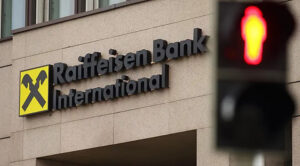
Which regions became tourist centers?
According to the State Tax Service, UAH 91.7 million in tourist tax was paid to local budgets from July to September 2025.
In total, businesses paid UAH 234.4 million in tourist tax over the first nine months of 2025. This is 1.5 times more than during the same period before the start of the full-scale war. Kyiv, Lviv, and Ivano-Frankivsk regions remain the largest contributors to local budgets.
Local budgets received UAH 234.4 million in tourist tax for the first nine months of 2025. This is 36% more than in the same period last year and 1.5 times more than before the start of the full-scale war.
The summer season is traditionally the “golden time” for the tourism industry. Businesses paid 91.7 million hryvnia in tourist tax from July to September 2025. This is 20% more than in the second quarter of this year — 76.2 million hryvnia.
More than half of the tourist tax — 53% or UAH 125.2 million — was paid by large businesses: hotels, sanatoriums, and recreation centers. The remaining 47% or UAH 109.2 million was paid by small businesses, i.e., owners of apartments, estates, and small tourist facilities. It is worth noting that revenues from small businesses increased by 39%, while those from large businesses increased by only 6.5% during this period.
The capital remains the undisputed leader of Ukrainian tourism. A fifth, or UAH 51 million, of the tourist tax was paid in Kyiv. 81% of this amount came from large businesses.
Lviv region is in second place with UAH 42.5 million — here the share of large businesses is smaller, 56%. Ivano-Frankivsk region closes the top three — UAH 32.5 million, while 55% of the tourist tax in the region was paid by small businesses.
The amount of tourist tax collected in the Odesa region increased the most during the holiday season. Despite this, the region’s figures for the first nine months are still 17% lower than for the same period in 2021.
Compared to the pre-war period, the amount of tourist tax collected in Bukovina increased fivefold. At the same time, 90% of the amount was provided by owners of apartments, estates, and small tourist facilities. Ivano-Frankivsk region is also among the leaders: the amount of tourist tax for this period increased 4.5 times.

Small and medium-sized businesses (SMEs) remain the foundation of post-war economic recovery, and this segment will be the focus for Sens Bank in 2025–2026, said Yana Shumunova, director of the SME department, in an interview with Interfax-Ukraine.
“We are seeing growth in demand for loans to restore logistics, purchase equipment, and implement energy-efficient solutions. This is the foundation for the return of Ukrainian business to sustainable growth,” she said.
The bank is also strengthening its cooperation with the EBRD and international funds to expand SME lending programs.
Sens Bank is a Ukrainian universal bank specializing in the corporate and retail segments. After coming under state control, the bank is transforming its business model, focusing on technology, transparency, and support for SMEs.

Apple Inc. intends to continue increasing investment in business development in China and further strengthening cooperation with the aim of achieving mutually beneficial development, said the company’s chief executive Tim Cook at a meeting with China’s Minister of Industry and Information Technology Li Lichen.
The minister noted that China’s massive domestic market and comprehensive industrial system have enormous potential in terms of investment and consumption, according to Xinhua News Agency.
“We hope that Apple will continue to develop the Chinese market, actively participate in China’s reindustrialization, and work with Chinese companies to promote innovative development across the entire production chain,” Li Lichen said.
He added that China is committed to a policy of openness to the outside world, intends to promote the application of intelligent technologies in industrialization and the intelligent transformation of industry, and will contribute to the creation of a favorable business environment for enterprises with foreign capital participation, including Apple.

Nearly 480 household owners have received microgrants from the Ukrainian Red Cross (URC) to develop or rebuild their own businesses.
“The Ukrainian Red Cross continues to support people who are striving to rebuild their lives and secure a stable income. As part of the “Reboot: Expanding Employment Opportunities” program, 478 household owners have already received UAH 47.8 million in microgrants to implement their own business plans,” the Communications and Marketing Department of the National Committee of the Red Cross Society of Ukraine reported on Wednesday.
The program participants were people who suffered from the war, in particular due to the loss of their jobs, homes, or businesses.
The selection of participants took place in two stages. The first wave of the competition ended in July this year and covered eight regions and the city of Kyiv. The second wave was held in Vinnytsia, Ivano-Frankivsk, Kirovohrad, Lviv, Mykolaiv, Poltava, Ternopil, Cherkasy, and Khmelnytskyi regions, as well as in Kyiv.
The supported businesses operate in various fields, including: repair services and workshops; the beauty industry – hairdressing, cosmetology, and manicure services; public catering – cafes, bakeries; manufacturing and trade – plumbing, construction, and children’s goods; educational services, children’s rooms; animal husbandry, beekeeping, and plant growing.
The UCC’s “Reboot” program is implemented with the support of the Spanish, Danish, and Swiss Red Cross.
The program has been in operation since 2024 and aims to support micro-entrepreneurship among internally displaced persons, veterans, their family members, and representatives of other vulnerable population groups.
Source: https://interfax.com.ua/

Top countries whose citizens become entrepreneurs in Ukraine
Over 1.6 thousand sole proprietorships were opened by foreigners in Ukraine in the first 9 months of 2025, according to the Unified State Register. This is almost 10% less than during the same period last year. At the same time, the net increase between openings and closures this year amounted to 490 non-resident entrepreneurs. Most often, citizens of Azerbaijan, Russia, and Uzbekistan become entrepreneurs in Ukraine.
Foreigners registered 1,648 sole proprietorships this year in Ukraine, which is 10% less than in the same period last year. Overall, only 0.7% of all new entrepreneurs this year are non-residents of Ukraine.
At the same time, 1,158 foreign sole proprietors ceased their activities during the same period. The net growth amounted to 490 non-resident entrepreneurs. In total, more than 213 thousand entrepreneurs closed down in Ukraine during this period, with foreigners making up only 0.5%.
Unlike Ukrainians, most foreign entrepreneurs are men: 69% versus 31% women.
It is worth noting that non-resident entrepreneurs are quite resilient: the median operating time of such a business in Ukraine is 3.1 years. The record holder was a woman with Russian citizenship whose business operated for 30 years and closed at the beginning of this year. For comparison, Ukrainian sole proprietorships last slightly less — 2.5 years.
“Opening sole proprietorships by foreigners is an absolutely normal and legal practice. People who have a temporary or permanent residence permit in Ukraine obtain a tax identification number (TIN), so they can officially run a business and pay taxes on par with Ukrainian citizens. As for citizens of the Russian Federation — they are no exception to this rule. Only those who legally reside in Ukraine can start their own business. In this case, the procedure does not differ from opening a sole proprietorship by any other non-resident,” notes Denys Popov, head of the legal department of Opendatabot, lawyer, and arbitration manager.
Most new entrepreneurs come from Azerbaijan — 229 (14%), followed by citizens of the Russian Federation — 222 (14%), Uzbekistan — 160 (10%), Moldova — 125 (8%), and Armenia — 95 (6%).
The highest number of business closures were among citizens of Russia — 241 (21%), Azerbaijan — 157 (14%), Moldova — 102 (9%), Uzbekistan — 91 (8%), and Belarus — 69 (6%).
The majority of foreigners choose the trade sector — nearly every third business. Other popular sectors include food service (14%), wholesale trade (9%), computer programming (6%), and information services (4%).
Most closures also occur in these sectors: retail trade (37%), computer programming (10%), and food service (9%).
Every third foreign entrepreneur starts their business in Kyiv: 544 in 2025. Next come Odesa region — 300 (18%), Kyiv region — 138 (8%), Kharkiv region — 104 (6%), and Lviv region — 83 (5%). The fewest foreign entrepreneurs are registered in Volyn, Chernihiv, Sumy, Donetsk, and Kherson regions — from 2 to 17.
Foreigners mostly close their businesses in the same regions: Kyiv — 297 (26%), Odesa (17%), Kharkiv (9%), Kyiv region (8%), and Dnipropetrovsk (5%).
https://opendatabot.ua/analytics/fops-foreigners-2025
https://opendatabot.ua/analytics/fops-foreigners-2025

Austrian bank Raiffeisen Bank International (RBI) has again failed to sell its stake in its Russian business due to opposition from the Russian authorities, according to Reuters, citing sources familiar with the situation.
RBI attempted to sell part of its Russian subsidiary to a local buyer in order to withdraw billions of euros in profits that were “frozen” in Russia. However, the deal requires approval from Russian regulators, which has not been obtained. According to the sources, Russia opposed the move, fearing that the transfer of the stake to the Russian side could provoke Western sanctions against RBI, thereby undermining important channels of financial ties with Europe.
Sources note that Raiffeisen plays a key role in processing payments for Russian gas, including through the TurkStream gas pipeline, making it an important “financial bridge” between Russia and Europe.
RBI’s press service said the bank is scaling back its operations in Russia and that any deal to sell the business “depends on many regulatory approvals, including the approval of the Russian authorities.”
Since the start of the war in Ukraine, Raiffeisen has accumulated about €7 billion in profits, which are “blocked” in Russia due to the inability to repatriate them. The bank handles significant transactions related to gas supplies to Europe via pipelines — part of Russian exports, estimated to be worth several billion dollars a year.